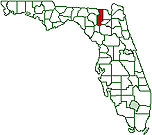FL Falls Behind National High School Graduation Rate: Alternative Schools Not Helping
Posted May 18, 2016 06:50 am | Public News Service
 TALLAHASSEE,
FL – Florida falls behind the national high school
graduation rate and the recent proliferation of
alternative schools doesn't seem to be helping,
according to a new study.
TALLAHASSEE,
FL – Florida falls behind the national high school
graduation rate and the recent proliferation of
alternative schools doesn't seem to be helping,
according to a new study.
Even though they enroll a small slice of students, the report from Johns Hopkins University finds that charter, virtual and alternative schools account for a disproportionate share of the high schools with low graduation rates, in Florida and nationwide.
Study co-author and director of John Hopkins' "Everyone Graduates Center," Dr. Robert Balfanz says while alternative schools can be a lifeline for some students, that isn't always the case.
"Sometimes what happens is, we let kids struggle too
much and they get too far behind, and then we hope that
this other school will fix it," Balfanz explains. "And
then it's really challenging, because there's just so
many high-needs kids concentrated together."
The report lists Florida as having the second-highest
number of low-graduation-rate high schools in the
nation, and nearly half of those are charter,
alternative or virtual schools.
The newly-revised Every Student Succeeds Act requires
school districts to provide research-based help for
schools that graduate fewer than 67 percent of students
in four years.
While critics say some students are simply not capable
of finishing high school in four years, Balfanz notes
adding a fifth or sixth year only increases graduation
rates by very small percentages.
He says today more than ever, it's critical to get kids
out of high school on time, and headed in the right
direction.
"There's no jobs available that will let you support
families if you don't have a high school diploma and
some sort of post-secondary schooling, or training or
apprenticeships," Balfanz says. "And essentially, if our
public education system is not preparing its students to
support their families, we have big problems."
Balfanz says in some states, like New York and New
Jersey, alternative schools are helping solve the
dropout crisis, and he points to strong oversight and
accountability as key factors.
But he cautions that with the rapid growth of
nontraditional schools, often enrolling high percentages
of low-income kids and students of color, early-warning
systems for those who are struggling must be in place.
"It's a lot harder to help those kids succeed," Balfanz
says. "But the evidence is clear it's totally possible,
and we shouldn't accept lower outcomes just because they
have challenging life circumstances."
Photos/graphics, layout, and links added by the Observer
This piece was reprinted by the Columbia County Observer with permission or license. It may not be reproduced in any form without permission or license from the source.
